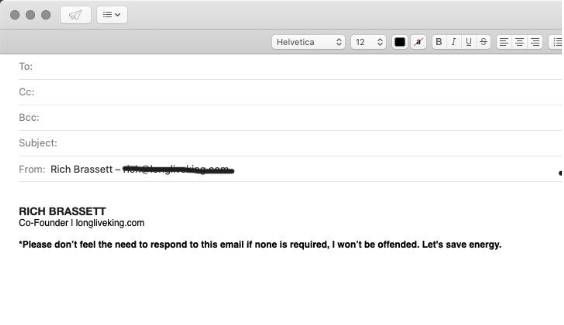Sustainable Best Practices for Digital Activities: What You Need to Know

Ideas fly. Marketing ideas fly even farther. Most marketers have often fancied their power to change the world. In a non-flattering way, it is, in fact, true. Even when an ad campaign doesn’t fly, one can be confident that on average, it would have generated carbon emissions equivalent to three round-trip flights between Paris and New York. That’s the key finding from Good-Loop’s online carbon calculator.
A typical ad campaign comprising a 100-megabyte video file that delivers 100,000 impressions in the UK equates to around 5.4 tons of carbon. And that is just one average ad campaign. In this blog, we take a closer look at the urgent and rising problem of the carbon footprint of digital advertising
Magnitude of the Problem of the Carbon Footprint of Digital Advertising
The aviation sector has long been criticized for its outsized CO2 and GHG emissions, roughly estimated to cause 3.5% of the drivers of climate change. Digital technologies and the Internet, on the other hand, are responsible for more than 4%. What’s more, based on the growth rates of AI, this is estimated to reach 8% very soon.
To put that in perspective, 8% would equal the same amount as the current share of car emissions around the world. Clearly, that’s unsustainable. Greenspector estimated that the average social media user who spends around 2.4 hours on social media (such as Facebook, Instagram, and YouTube, which are mostly financed through advertising) generates 165.6 grams of CO2 equivalent every day. Doesn’t that give an additional meaning to the phrase doom-scrolling?
In fact, each digital ad impression can produce up to 1.09 grams of CO2 before offsetting, per the peer-reviewed scientific article, “Environmental Impact Assessment of Online Advertising”. Clearly the problem of the carbon footprint of digital advertising is gigantic, distributed and widespread.
Solutions in Sight
Audi recently promoted their latest electric car using an adaptive streaming technology system developed by SeenThis to reduce the data transfer of its digital ad operations by 33%.
Similarly, there’s a burst of climate-conscious agencies and digital tools which are helping to reduce the carbon footprint of digital advertising. Essentially, they’re trying to make ads become less polluting. In fact, a range of organizations are helping marketers measure the carbon footprint of their website, to estimate the emissions from ad creatives, and even calculate the impact of data transfer across performance marketing channels and emails.
SEOs too have been upscaling their game by using the recent update from Screaming Frog’s Log File Analyzer tool (based on the Green Web Foundation’s CO2.js) to understand the CO2 impact of both bots and users. Additionally, for those of us obsessed with site speed and good UX, there is an additional case for promoting the use of smaller images and minimizing page-load resources.
Furthermore, as part of the Ad Net Zero plan, several large media companies have been coming together to work on measuring the carbon footprint of digital advertising production. Not only that, they are also taking action to reduce its impact through AdGreen.
The Challenge
When asked in a recent survey why making websites greener wasn’t a higher priority for businesses, 38% of the responding marketers chose “due to limited knowledge of the environmental impact” as the primary reason. And that’s the biggest challenge. Most marketers aren’t even aware of digital carbon footprinting. Beyond just the estimator tools, and platitudes about the importance of sustainability, there’s a real need for this to be taken seriously. Businesses must have ingrained processes within marketing teams to ensure measurement, internal team alignments, understanding of platform level emissions and stakeholder management to deliver big wins.
My bet is in the coming days, we will be measuring metrics such as the carbon cost (gCO2eq) per 1,000 impressions, just like we measure CPMs and CPCs today. Similarly, while return on investment and return on ad spends are universally accepted metrics to judge campaign effectiveness, there are new metrics such as Return on Carbon (ROCO2) to measure advertising’s “ecoffectiveness”.
Advertising platforms and ad placement websites will adapt to align with these metrics. After all, advertising has to cater to people’s desires and needs. This is especially true as survey after survey shows people have begun preferring sustainable alternatives. To that end, the carbon footprint of digital advertising requires immediate attention.
The Here and Now
Predictions for the future aside, there are certain steps we can take now to decrease the carbon footprint of digital advertising, as well as other digital activities.
1. Measurement
There are a variety of estimator and calculator tools that help measure the carbon emissions of various digital assets, be it a website, a graphic, or a video. Some great ones include Digital Beacon for websites, Good-Loop for graphic assets, and Ecosend for emails.
2. Avoidance
Sending a thank you email for a good deed definitely highlights your courtesy. On the downside, it also adds to the carbon footprint of digital advertising. Ovo Energy once calculated that if every British person sent one fewer thank you email a day, it would save 16,433 tonnes of carbon a year. This, incidentally, is equivalent to tens of thousands of flights to Europe.
Clearly, it is hard to nudge that kind of behavior without offending people. However, Rich Brassett, the founder of a sustainability-driven digital agency has found an interesting middle road. His emails signature includes this note:

Similarly, other conscious decisions can be made to avoid other digital efforts. This includes multiple copies of the same files, uploading more content on cloud which might not be needed, etc.
3. Reducing and Repurposing
All graphic assets don’t need to be pixel perfect or shared in full HD. They might look better under a microscope, but does it really matter if you deliver the highest-quality image possible?
It is always a good idea to resize images and videos to smaller sizes or acceptable pixel quality. Additionally, using efficient formats such as SVGs instead of JPGs or PNGs is a good thumb rule. Studies show more than half of what the digital data firms generate is collected, processed, and stored for single-use purposes. Often, it is never reused. Thus, consider recycling already created content. Repurposing existing footage or using good-quality stock images can also significantly decrease the environmental impact. There are times when this wouldn’t work, of course, but in many cases it really could.
4. Building Efficient Websites
Sure, an animated carousel looks good and appealing. And so does an autoplaying video on the hero section. Researchers, however, unanimously conclude that they don’t make for good UI. This is because they prevent users from taking desired actions. By adding these distracting elements, not only are we generating business losses but also creating pointless emissions.
It might be counterintuitive, but simple minimalistic websites with clear calls to action usually deliver the best conversion rates. Here’s an example of a simple but high-conversion-rate website.
5. Making Sustainable Choices
There are several day-to-day choices that marketers make. These range from the choice of colors (dark mode is more sustainable), ad platforms (Google, Reddit, Snapchat), softwares (SEMRush vs Moz vs ScreamingFrog) to messaging (Buy now vs Patagonia’s Don’t Buy This Jacket). Every such decision has an impact on the carbon footprint of digital advertising. Given the power of these choices (without advertising money it’s hard to imagine social media or news organizations), it is critical to self-reflect and consider why you make the decision you do. Is it purely from a short-term efficiency perspective or a longer-term benefits perspective? Every decision matters. It’s not easy, certainly. However, given the scale, organization skills, and community of sustainability-driven professionals, it is also not as difficult as it once was.
The Path Ahead
A big challenge with the narrative around climate change is our feeling of inconsequentiality. There’s a sense that we are all on our way to certain doom. But if you just research digital sustainability practices, you will see the novelty and variety of approaches people take. It adds to the optimism about the creative human spirit and the real possibility that the carbon footprint of digital advertising and individual online practices can be reduced.
There are several trailblazers and pioneers who are figuring out new ways to cut down carbon emissions. Industry giants are building coalitions while agencies are boycotting big polluters.
NOTE: The views expressed in this article are those of the author and not of Emeritus.

























